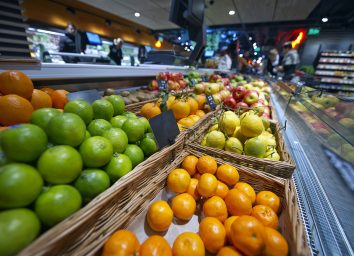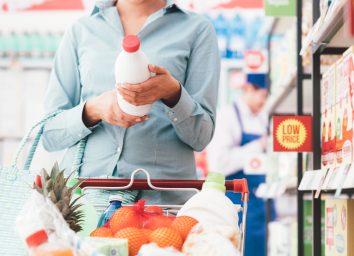These Are the 12 Dirtiest Foods on Grocery Store Shelves, According to an Expert
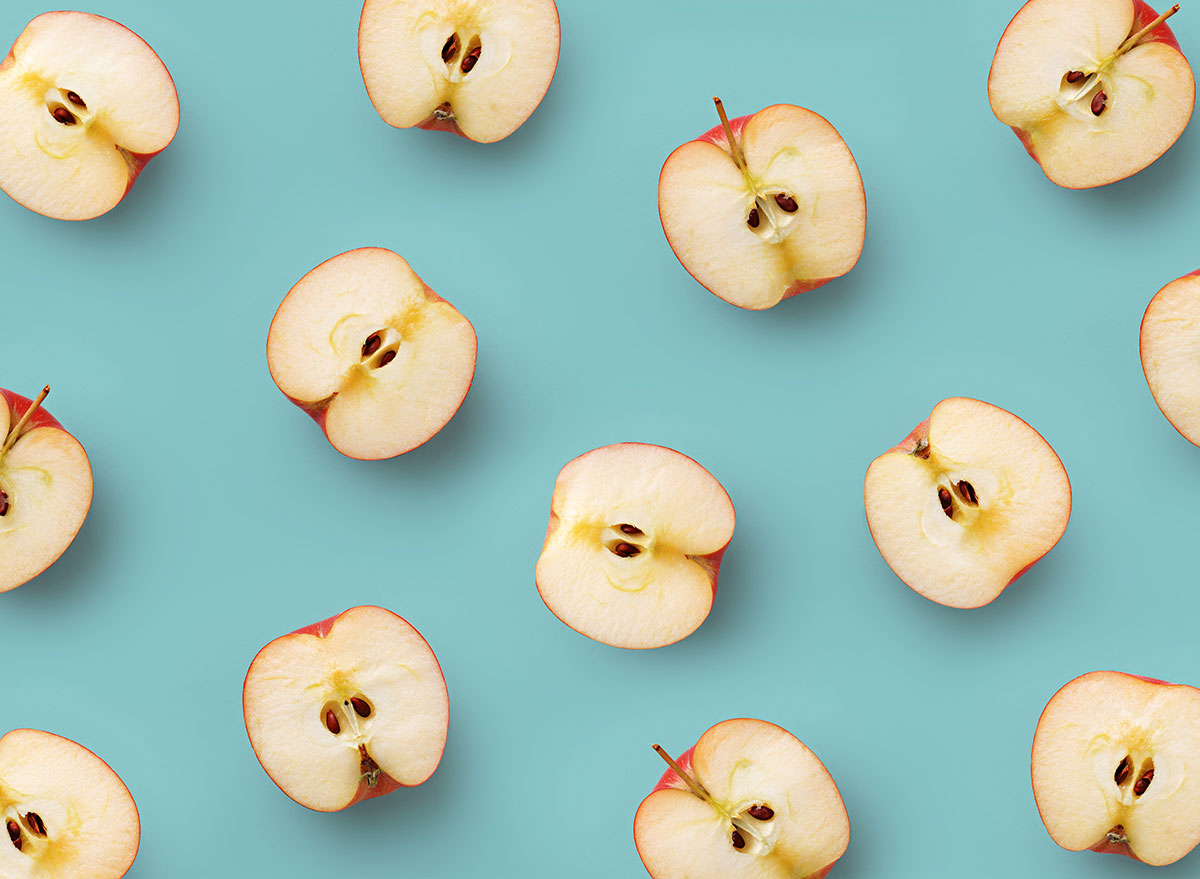
Fruits and vegetables are an essential and integral part of your diet, however, some of them have relatively high levels of pesticide residue—which could be damaging to your overall health.
Each year the Environmental Working Group (EWG) releases its Shopper's Guide to Pesticides in Produce, which contains the Dirty Dozen—a list of fruits and vegetables that contain the most pesticides. Thomas Galligan, PhD, and EWG toxicologist explains that while the health benefits of eating a diet rich in fruits and vegetables outweigh the risks posed by pesticide exposures, it's still key to keep your exposure levels low.
"It is also important to reduce your exposure to pesticides because pesticides have been linked to a variety of health harms, like cancer, hormone disruption, and damaging children's developing brains. Switching to organic produce is an effective way to reduce your pesticide exposure," he said to Eat This, Not That!
However, buying organic produce (which often comes at a premium price) isn't always attainable for families. As Tamika D. Sims, PhD, senior director of the Food Technology Communications at the International Food Information Council points out, the EWG's Dirty Dozen list could give families with lower household incomes the wrong impression. (Related: The 7 Healthiest Foods to Eat Right Now).
"Studies have shown that giving organic produce a 'health halo' can sway people from conventional produce and contribute to a decreased consumption of fruits and vegetables," she says. "The formation of a 'dirty' list or a 'clean' list can sway consumers from eating more fruits and vegetables that are accessible and affordable."
Still, it's beneficial to know which fruits and veggies tend to boast the most pesticide residues. Galligan adds that the "EWG recommends everyone eat more fresh fruits and vegetables, whether organic or conventional. Below, you will see the methodology provided by the EWG.
Methodology: The Shopper's Guide ranks pesticide contamination on 46 popular fruits and vegetables based on an analysis of more than 46,075 samples taken by the USDA and the FDA. Each year the USDA selects a subset of these fruits and vegetables to test, rather than testing each crop each year. To create this guide, EWG uses data from the most recent one-to-two-year sampling period for each food. Since the USDA doesn't test honeydew melon, EWG uses the FDA's pesticide monitoring data for this crop.
Now, here are the produce items that contain the most pesticides.
Tomatoes
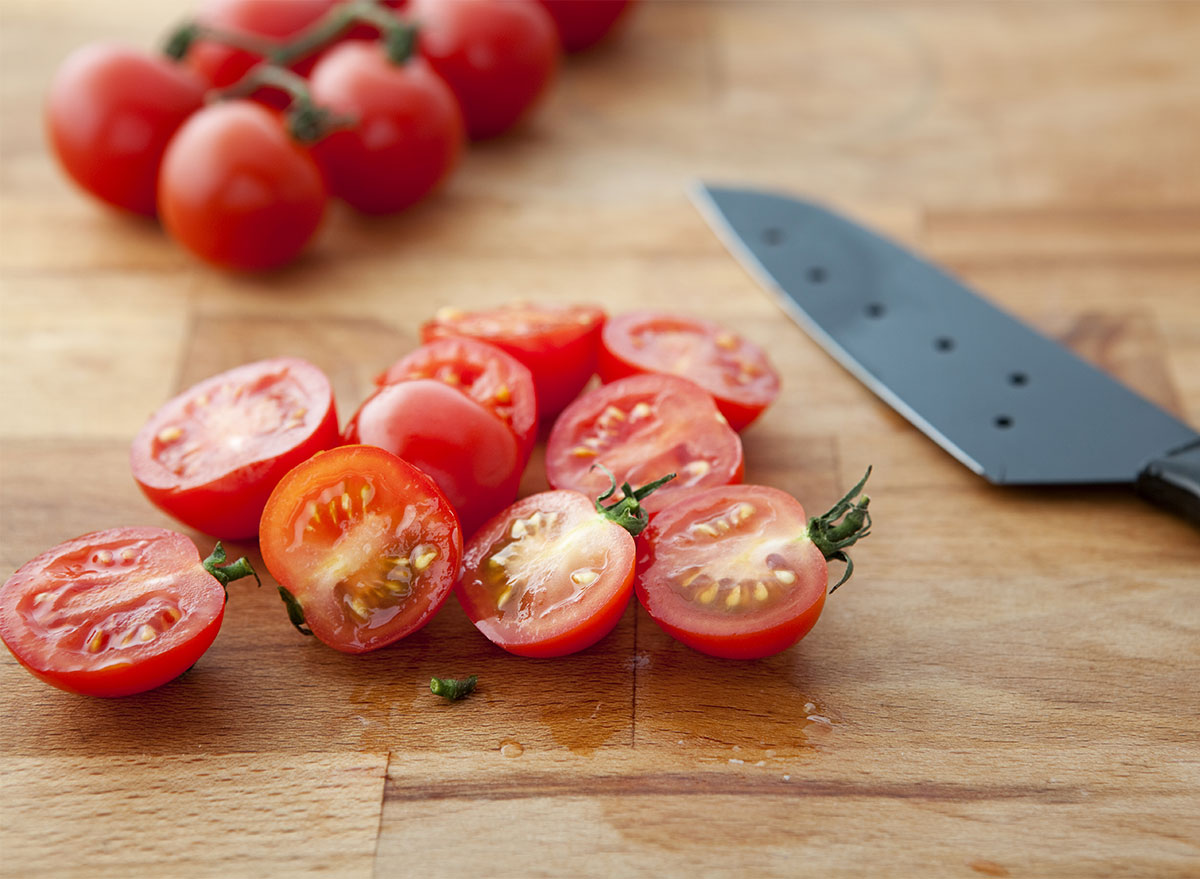
Just because tomatoes made the "naughty list" for pesticide residue doesn't mean you should steer clear of them. If anything, you should make sure you're eating enough of them. Why? Tomatoes are loaded in vitamins C, K, and B9 (folate) all of which are key for optimal health. Make sure to scrub the tomato's surface under running water for at least 10 seconds before eating them—organic or not!
Celery
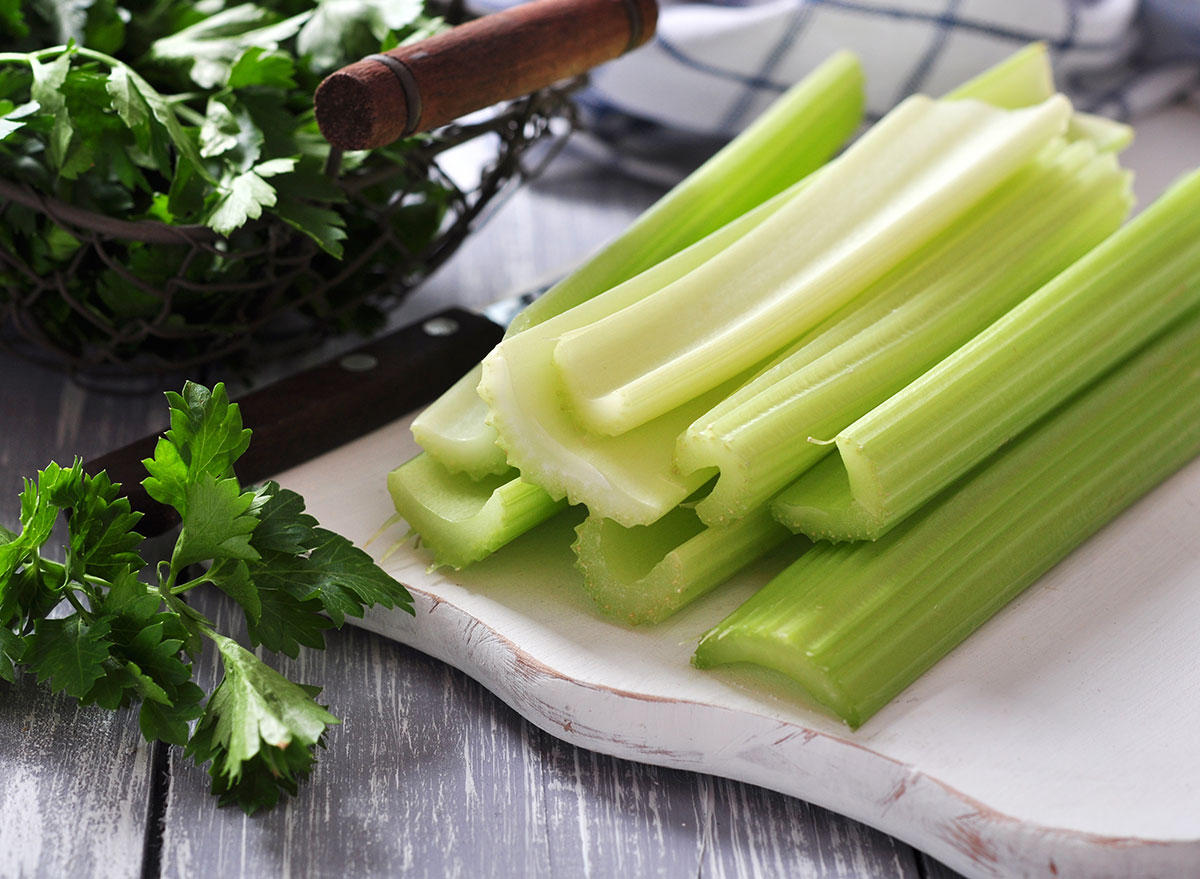
This low-calorie vegetable, unfortunately, is considered one of the top carriers of pesticide residue. So, before chopping it up and tossing into your homemade crockpot stew or slathering it with peanut butter and raisins, be sure to give the stalk a good scrubbing.
Bell and hot peppers

Galligan told CNN that one of the more shocking items on this year's list included bell and hot peppers.
"They haven't been tested since 2011-2012, and the USDA found 115 different pesticides on last year's pepper crops. This is the most, by far, of any of the crops tested," he said.
Still, bell peppers (especially red ones) are highly nutritious and very versatile. Consider chopping them up and adding them on top of your salad. Or, slice them vertically and sauté them with onion for your next fajita night.
Pears

If pears are one of your all-time favorite fruits, don't let this deter you from eating them! Just know a pear could benefit from a little extra washing before sinking your teeth into it. Or, better yet, opt for organic if you can.
Peaches
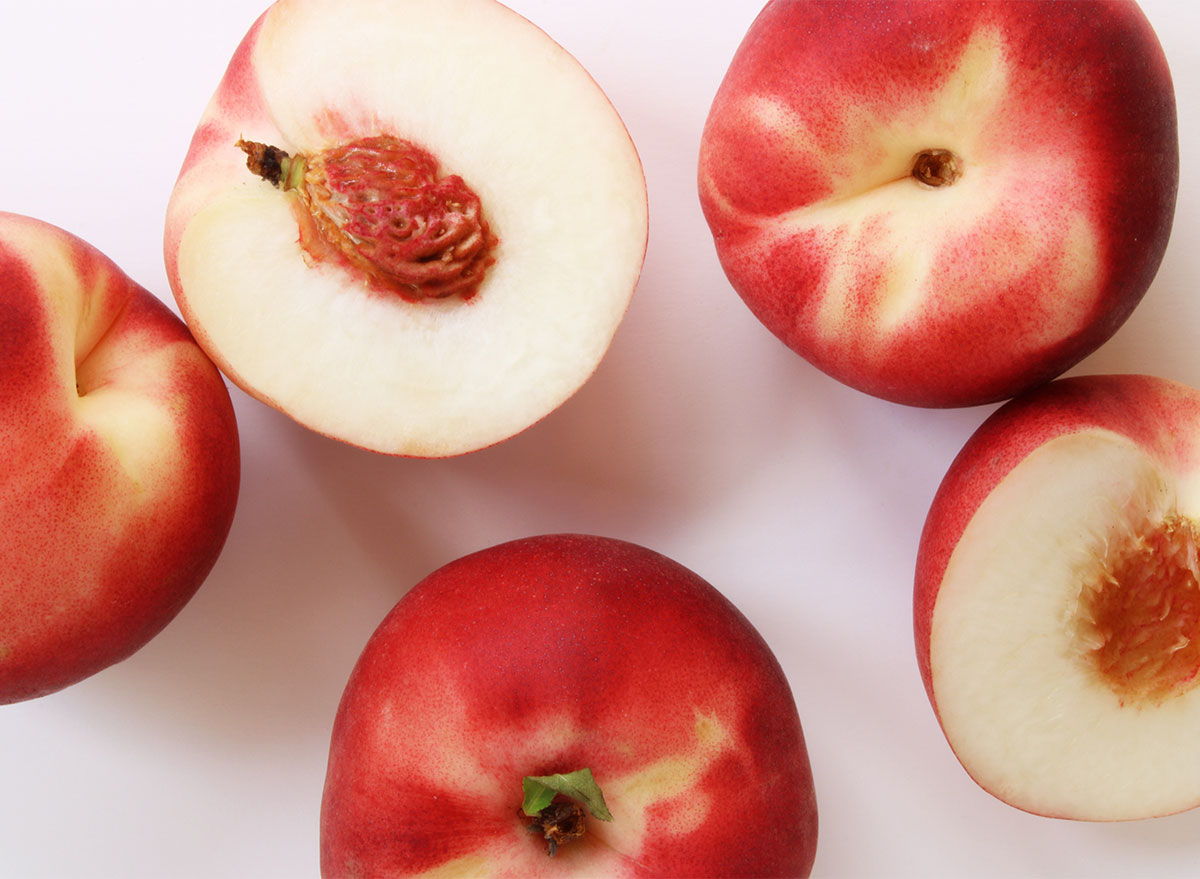
This sweet, fuzzy fruit often carries quite a bit of pesticide residue, so try and buy organic if your wallet allows.
Cherries
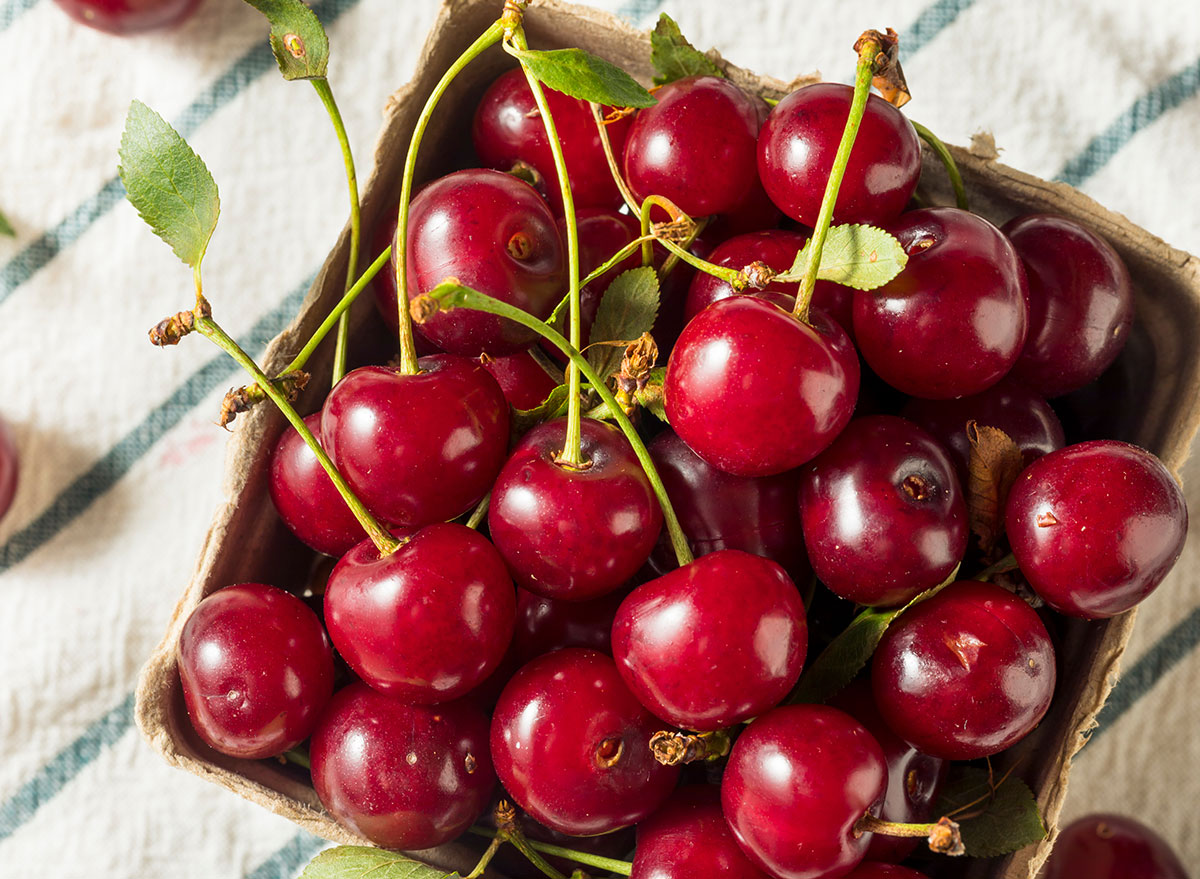
Cherries are often contaminated with a pesticide called chlorpyrifos, which was originally designed to be an alternative to DDT. In case you didn't know, DDT was banned by the United States Environmental Protection Agency (EPA) over 40 years ago for concerns about it causing harm to both humans and the environment. However, chlorpyrifos doesn't appear to be a safe solution—in fact, it was recently banned in Europe because of evidence suggesting its toxicity to the brain, especially in children.
Grapes

Grapes are also among the bunch of crops that are most likely to be sprayed with chlorpyrifos. Definitely consider buying organic grapes if you can to avoid exposure to the potentially neurotoxic chemical.
Apples

Whether you like Golden Delicious, Honeycrisp, or Gala apples, opting for organically-grown varieties is strongly advised by the EWG. And, don't miss Surprising Side Effects of Eating Apples, According to Science.
Nectarines
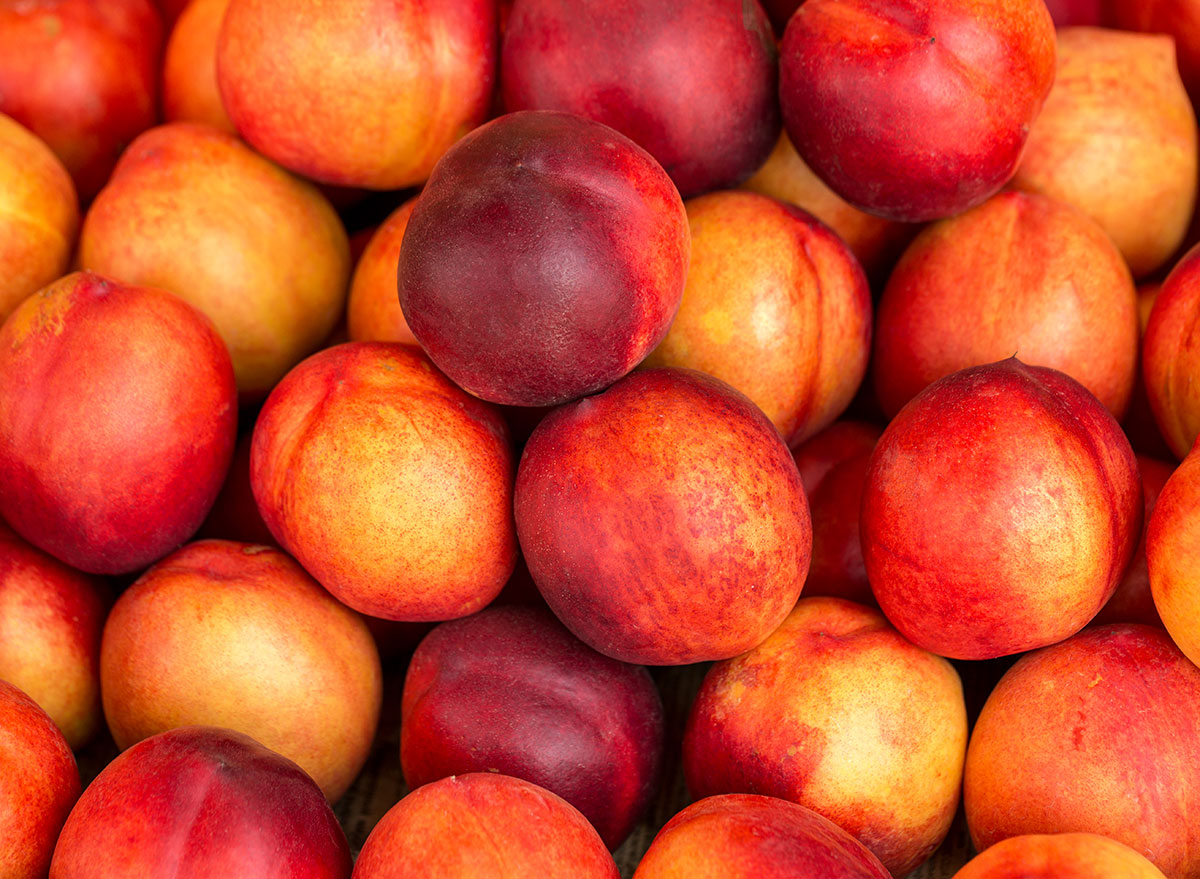
The succulent, smooth-skinned peach is also to blame for carrying for too much pesticide residue, that is when it's conventionally grown. When in doubt, buy organic if your budget allows.
Kale, collard, and mustard greens
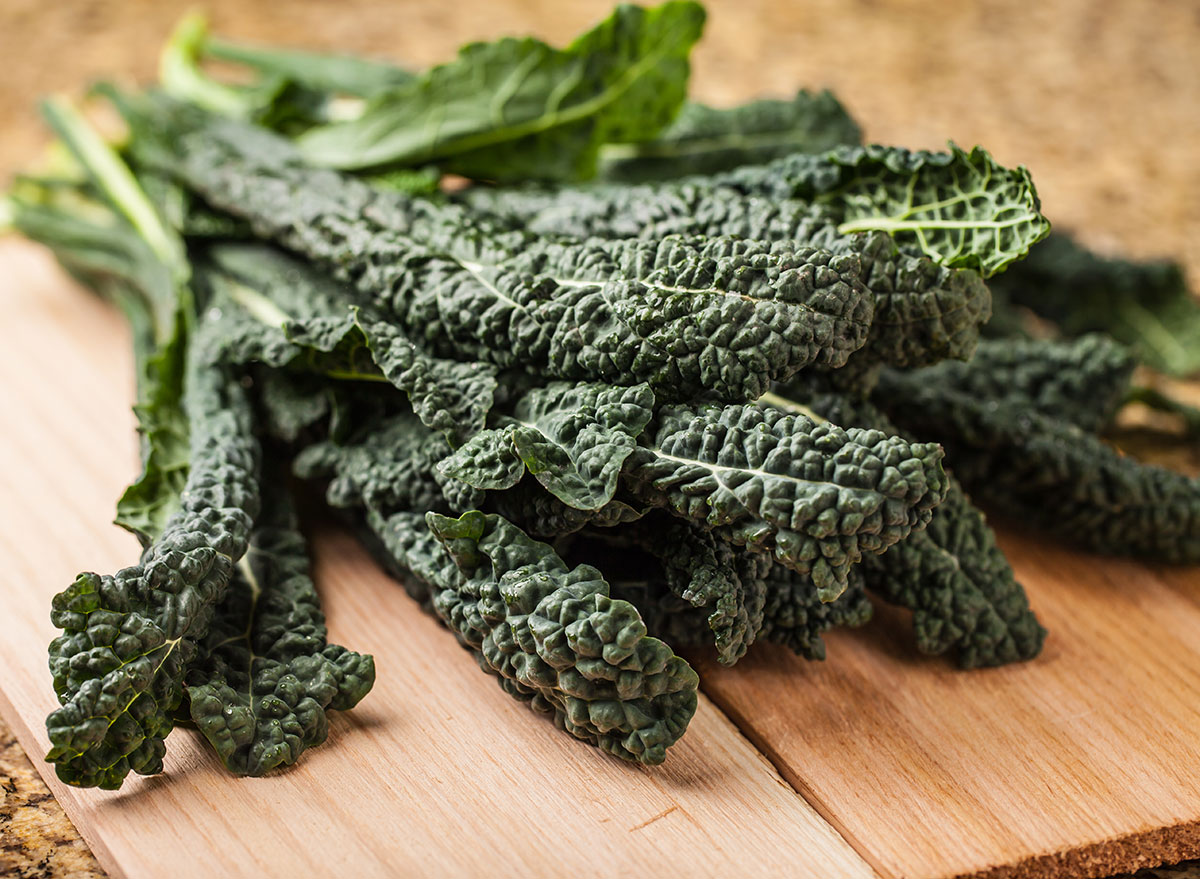
This is not an excuse to not eat your leafy greens! The EWG strongly encourages consumers to purchase organically grown kale and as of this year, collard and mustard greens as well. The USDA's tests revealed that these veggies contain a pesticide called DCPA, which the EPA classifies as a human carcinogen.
Spinach
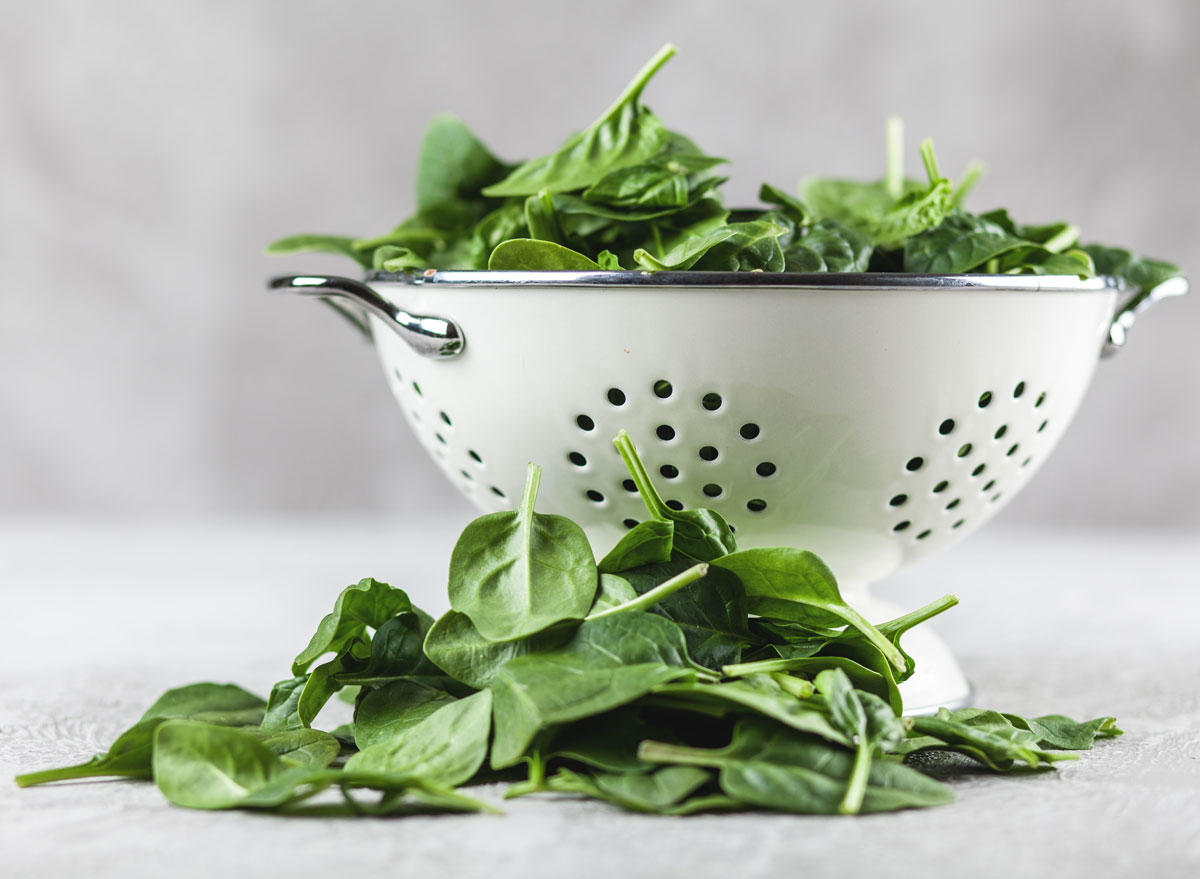
Spinach should not be removed from your diet just because it made the Dirty Dozen. If you can buy organic and always thoroughly wash the leafy green before consuming or even cooking with it.
Strawberries

It's important to note that the USDA doesn't test all produce each year and strawberries are one of them. Galligan told us that the fruit was last tested in 2016. This, in part, is why strawberries continue to take the lead as the produce item that contains the highest levels of pesticides.
However, Galligan reassures that this infrequent testing is still to be trusted as in many ways the testing data remains, "consistent from year to year because the growing practices for nonorganic produce remain remarkably stable, despite sharply growing consumer demand for organic fruits and vegetables."
Bottom line? Buy organic strawberries over conventionally-grown ones if you can.
Now, be sure to read the 15 Cleanest Foods on Grocery Store Shelves, According to an Expert.
